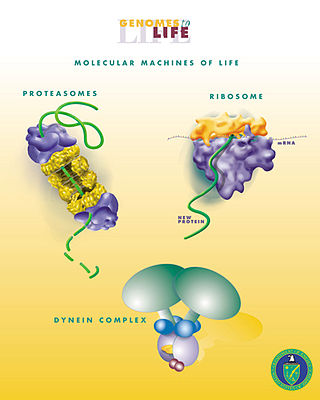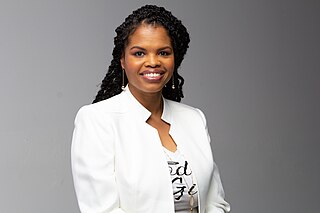Related Research Articles

Biomedical engineering (BME) or medical engineering is the application of engineering principles and design concepts to medicine and biology for healthcare applications. BME is also traditionally logical sciences to advance health care treatment, including diagnosis, monitoring, and therapy. Also included under the scope of a biomedical engineer is the management of current medical equipment in hospitals while adhering to relevant industry standards. This involves procurement, routine testing, preventive maintenance, and making equipment recommendations, a role also known as a Biomedical Equipment Technician (BMET) or as a clinical engineer.

Mechanical engineering is the study of physical machines that may involve force and movement. It is an engineering branch that combines engineering physics and mathematics principles with materials science, to design, analyze, manufacture, and maintain mechanical systems. It is one of the oldest and broadest of the engineering branches.

Biological engineering or bioengineering is the application of principles of biology and the tools of engineering to create usable, tangible, economically viable products. Biological engineering employs knowledge and expertise from a number of pure and applied sciences, such as mass and heat transfer, kinetics, biocatalysts, biomechanics, bioinformatics, separation and purification processes, bioreactor design, surface science, fluid mechanics, thermodynamics, and polymer science. It is used in the design of medical devices, diagnostic equipment, biocompatible materials, renewable energy, ecological engineering, agricultural engineering, process engineering and catalysis, and other areas that improve the living standards of societies.
Biomechanical engineering, also considered a subfield of mechanical engineering and biomedical engineering, combines principles of physics, biology, and engineering. Topics of interest in this field include biomechanics, computational mechanics, continuum mechanics, bioinstrumentation, design of implants and prostheses, etc. This is a highly multidisciplinary field, and engineers with such a background may enter related niche careers, e.g., as an ergonomics consultant, rehabilitation engineer, biomechanics researcher, and biomedical device engineer.
Nancy Burr Deloye Fitzroy was an American engineer specializing in heat transfer and fluid dynamics. She was one of the first female helicopter pilots.
Marjolein Christine Hermance van der Meulen is an American engineer who currently serves as James M. and Marsha McCormick Director of Biomedical Engineering and Swanson Professor of Biomedical Engineering at Cornell University and is a Senior Scientist in the Research Division of the Hospital for Special Surgery.
Susan Margulies is an American engineer and assistant director of the U.S. National Science Foundation, heading the Directorate for Engineering. She is also the Georgia Research Alliance Eminent Scholar in Injury Biomechanics and Professor in the Wallace H. Coulter Department of Biomedical Engineering at the Georgia Institute of Technology and Emory University, where she served as chair from 2017 to 2021. She is a world leader in the biomechanics of head injury in infants.
Caitríona Lally is a professor of Bioengineering in Trinity College, Dublin. She has been a qualified mechanical engineer since 1997. She did a PhD in cardiovascular biomechanics.
Lucas H. Timmins is an American biomedical engineer and currently an associate professor at Texas A&M University. He is active in the fields of computational and experimental biomechanics and the application of these research domains to address prevalent challenges in cardiovascular medicine.
Ellen Marie Arruda is an American mechanical engineer known for her research on the mechanical properties of polymers and on tissue engineering, with applications including the design of improved football helmets, artificial tooth enamel that can withstand high-shock and high-vibration environments, and nanolayered composite materials that are lightweight, as strong as steel, and transparent. The Arruda–Boyce model for the behavior of rubber-like polymers is named for her and her doctoral advisor Mary Cunningham Boyce, with whom she published it in 1993. She is Maria Comninou Collegiate Professor of Mechanical Engineering and Tim Manganello / Borg Warner Department Chair of Mechanical Engineering at the University of Michigan.

Lakiesha Williams is a biomedical engineer and an Associate Professor at the University of Florida. Williams specializes in traumatic brain injury and biomechanics. Specifically, her work involves the modelling and mechanics of soft tissue, and how outside influences affect their structure. Much of her work on repetitive brain trauma involves utilizing preclinical models to study the long term neurodegenerative effects of damages. She grew up in New Orleans, with her dad working as a carpenter. Williams went on to become a first generation college student, college graduate, and now, an Associate Professor.
Beth L. Pruitt is an American engineer. Upon completing her master's degree in manufacturing systems engineering from Stanford University, Pruitt served as an officer in the United States Navy. She is a full professor of mechanical engineering, biological engineering, and biomolecular science & engineering at the University of California, Santa Barbara. She is a fellow of both ASME and AIMBE.
Karen A. Thole is an American mechanical engineer who serves as distinguished professor at Pennsylvania State University. Previously, she served as the head of the Department of Mechanical Engineering at Pennsylvania State University from 2006 to 2021. Thole was first promoted to professor in 2003 at Virginia Tech.
Pavlos P. Vlachos is a Greek-American engineer, scientist, academic, and entrepreneur. He is professor in Purdue’s School of Mechanical Engineering and in the Weldon School of Biomedical Engineering, and the St. Vincent Health Professor of Healthcare Engineering. He serves as the Director for the Purdue Regenstrief Center for Healthcare Engineering (RCHE).
Grace D. O'Connell is an American biomechanical engineer known for her research on the biomechanics of the human spine, on the degeneration and regeneration of spinal tissue, and on the comparison of its properties with the spines of animals used in the study of lumbar disc disease. She is an associate professor of mechanical engineering at the University of California, Berkeley, where she also held the Don M. Cunningham Chair in Mechanical Engineering.
Lorraine G. (Lori) Olson is an American mechanical engineer whose research involves the application of the finite element method in the engineering design process and in medical diagnosis, including detecting breast cancer. She is a professor of mechanical engineering at the Rose–Hulman Institute of Technology.
Stephanie Glenn Adams is an American engineer and academic administrator serving as the dean of the Erik Jonsson School of Engineering and Computer Science at the University of Texas at Dallas since 2019. She was president of the American Society for Engineering Education from 2019 to 2020. Adams served as dean of the Old Dominion University Batten College of Engineering and Technology from 2016 to 2019.
Laurel Kuxhaus is an American biomechanical engineer whose research focuses on the mechanics of soft and hard tissues in joints such as the elbow and ankle, and the effects of injuries on those joints. She is a professor of mechanical and aerospace engineering in the Wallace H. Coulter School of Engineering at Clarkson University.
Anne Katherine Silverman is an American biomechanical engineer whose research focuses on the mechanics of walking, and the design and analysis of prosthetics for prosthetics for amputees. She is Rowlinson Associate Professor of Mechanical Engineering at the Colorado School of Mines, where she heads the Functional Biomechanics Laboratory, and is a co-PI of the NSF Integrative Movement Sciences Institute.
Hala Zreiqat AM FAA FTSE FAHMS FRSN FIOR FIAAM is a biomechanical engineer whose research focuses on the development of novel engineered synthetic materials and 3D printed platforms for regenerative medicine. She is a Payne-Scott Professor in the Department of Biomechanical Engineering at the University of Sydney.
References
- 1 2 "Linxia Gu", Faculty profiles, Florida Institute of Technology, retrieved 2024-06-17
- ↑ Schrage, Scott (10 June 2015), "Engineers find blast waves have greater impacts on brain", Nebraska Today, retrieved 2024-06-17
- ↑ "Studying the changes that cells and tissue undergo when a stent is introduced: Research could improve prevention and treatment option for restenosis", Discovery files, National Science Foundation, 7 August 2014, retrieved 2024-06-17
- ↑ Schrage, Scott (6 December 2017), "Could a cardboard principle boost vehicle safety?", Nebraska Today, retrieved 2024-06-17
- 1 2 Wilbeck, Carole (20 February 2009), Mechanical engineer Gu leads ADVANCE hires, University of Nebraska-Lincoln College of Engineering, retrieved 2024-06-17
- ↑ "Linxia Gu", Mechanical & Materials Engineering, University of Nebraska-Lincoln College of Engineering, retrieved 2024-06-17
- ↑ All Fellows (PDF), American Society of Mechanical Engineers, September 2023, retrieved 2024-06-17